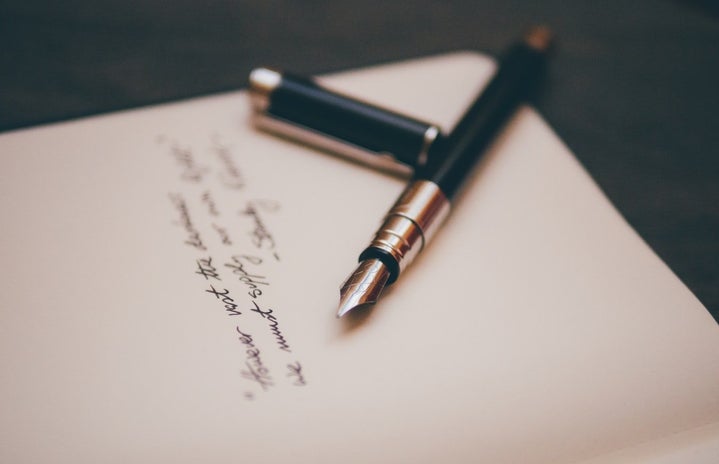It’s every creative’s dream: a book hot off the press, their name emblazoned on the cover. Years, months, weekends, and late nights’ work all condensed into a few hundred pages. So many writers dream of their first book release, the signings, the fan meetings, and the sequels, and yet find themselves lost with penning a draft.
Writing a book of any length is a daunting task. It’s a commitment that can take years. It saps at your spare time and at most of your thoughts. Although I have only published short stories (all of which can be found online), I’ve written a novella-length manuscript in under a month. What’s my secret? Read on to find out.
- what’s a novella?
-
To better understand the length of the manuscripts discussed, it’s imperative to define exactly what a novella is. A novella is a written work that is longer than a short story but shorter than a novel. Novellas are typically between 10,000 and 40,000 words, which roughly translates into about 20-100 single-spaced pages. Even if you’ve never read a novella, you’ve certainly heard of one; famous examples include Animal Farm, Of Mice and Men, and A Clockwork Orange.
My manuscript was around 30,000 words and totaled out to be around 80 pages. The advice throughout this article can be modified to suit writing projects of other lengths, but I will not pretend to hold expertise in writing a full, novel-length manuscript.
- The word count
-
In order to write a novella-sized manuscript in 30 days, you need to know exactly how many words must be written in a day in order to meet that goal. For me, I ended up writing 1,000+ words a day, or roughly four pages. It doesn’t sound like much, but the totals add up quickly. Depending on your intended word goal and the amount you’re comfortable writing in one sitting, divide up the work so that you’ll be writing in near equal chunks every day.
There are also the concerns of scheduling. I wrote my manuscript during the height of the pandemic at roughly sixteen years old; I was privileged enough to have the time required to write a full draft. When I returned to school the following year, I wrote during my lunch break. I recognize that having such time, even if during a break, is a privilege that not everyone can afford. If at all possible, it’s optimal to find a set time to write and stick to it. This may require utilizing evenings, spare time, weekends, or even holidays to write. I’ve certainly had to sacrifice them before.
Despite this, don’t throw away your life for your writing. As much as we fantasize, we are not old Victorian writers who had no cares besides writing. If you spend every waking hour writing, you’ll find yourself burnt out and dreading the manuscript you were once so passionate about. Writing is a balancing act; you must be able to juggle before continuing on.
- The idea
-
Obviously, before putting the pen on the page you must have some idea about what you’re going to write about. Whether you’re an in-depth planner or tend to jump right into the action, you’ll want to have a basic idea of your story before getting into the thick of writing. Character, plot, and setting are some of the most basic elements that compose a story. But you’ll also want to consider more intricate details that will shape your writing: what sort of tense and POV will you use, how will you utilize time, what of worldbuilding?
In order to maximize your time spent writing, you should have the basics down before your 30 days begin. For me, this means preparing an outline and general notes of what I’ll be writing, but this largely consists of whatever preparatory methods you take on before starting a piece. After all, you won’t want to spend hours of precious writing time fixing a plot hole that could’ve been taken care of before. It’s best to sort through these things early when possible.
- finding motivation
-
The death of many a great novel comes from burnout. The writer exhausts themselves from their work, loses passion for their piece, or otherwise feels disconnected from whatever they’re writing. You could have flawless prose, immaculate characterization, and worldbuilding that would make my jaw drop, and yet none of it would be brought to the light without motivation to continue.
As mentioned, one of the best things to do to prevent burnout is pacing yourself. Breaks are one of the most important things to allow yourself; breaks provide you, and by extension your muse, desperately needed rest.
In the event of a disconnect, sorting through any plot-related problems should get you up and writing again. Perhaps change a few key elements so that they are more palatable to you. If you can’t stand the work you’re creating, there’s no point in continuing on in misery.
But what of the death of passion, the hardest obstacle to overcome? If the thought of meeting your word count each day brings you stress, it might be best to put the project on hiatus and return to it another time. There’s no shame in saying no and quitting is a social construct. You have your entire life to write your novella. If you can’t write it in one month you’re just as accomplished for writing it in three. There’s also no shame in realizing a project simply isn’t working and starting over. Every writer has done it, and anyone who suggests otherwise is almost certainly lying.
If you want to keep pushing forward, remind yourself exactly why you took on this project and why you want to write it in a month. Write those reasons down on sticky notes and tape them to your laptop, write them in your writing notebook, scribble them on the margins of your manuscript, whatever will remind you of your end goal. Have fun with it and get excited to enter your world again: create playlists and mood boards for your characters, make maps of your world, pull up your favorite Tumblr writing prompt, and write self-fulfilling one-shots. After all, writing is supposed to be enjoyable, you wouldn’t do it otherwise.
- after the month
-
Congrats!! You’ve reached your word goal and have completed a novella-length manuscript! Now what? Your next actions depend largely on why you’ve written your manuscript. If this is entirely for yourself (or, in other words, you have no intention of publishing) there isn’t much in terms of requirements. You can edit if you’d like or simply leave it as is, basking in your accomplishment. This is what I did with my manuscript. I had no intention of publishing anything just yet, so I simply left the work as is.
However, for those of you who’d like to publish, the next step is revising your work. I usually rewrite every work twice at a minimum, just to catch any missed plotholes or mistakes. It’s also always a good idea to show a draft to another person willing to give honest feedback and help you improve. Once your work has been polished, revised, and brought to its fullest, straighten your back and bare your teeth; it’s time to enter the wonderful world of publishing.
- in conclusion
-
Writing is one of the most gratifying art forms that a person can engage in. Carrying out a project during a set timeframe can be daunting, but it makes the completion of a finished draft all the more rewarding. I hope you can come away from this article with renewed confidence in your projects. Keep your head up, manage your word count, and always keep writing.


